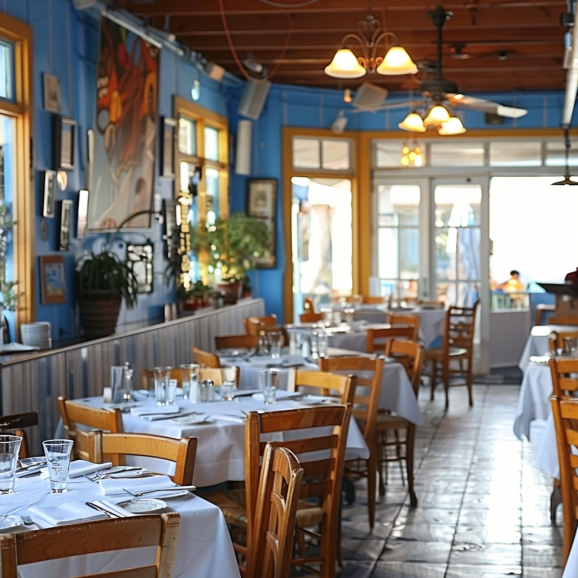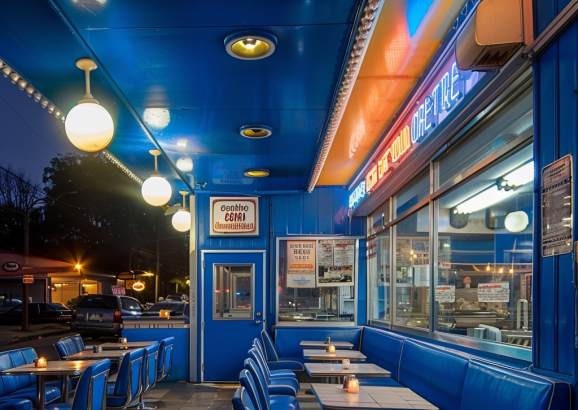
From bustling urban corners to quiet suburban streets, the classic Greek-American diner has become an iconic institution across the United States. These Greek American diners, with their extensive menus and welcoming ambiance, serve as cultural crossroads where Greek culinary heritage meets American comfort food. This blog post explores the fascinating evolution of Greek-American diners, tracing their origins, cultural significance, and the unique blend of flavors that have made them beloved by people of all backgrounds.
Origins of Greek American Diners
The story of Greek American diners begins with the wave of Greek immigrants who arrived in the United States in the early 20th century. Many of these immigrants found their first jobs in food service, with quite a few eventually owning or operating diners. The diner format, known for its open, extended hours, affordable pricing, and diverse menu, proved to be an ideal business model for these new Americans eager to share their culinary heritage while adapting to American tastes.
Cultural Significance
Greek-American diners are more than just eateries; they are vibrant social hubs that reflect the Greek ethos of philoxenia, or hospitality. These diners became spaces where community members could gather, share news, and support one another, all over a cup of coffee and a plate of comfort food. They also served as informal cultural ambassadors, introducing Greek cuisine and hospitality to a wider American audience.
A Fusion of Flavors
At the heart of the Greek American diners is its menu—a delightful fusion of traditional American dishes and Greek culinary staples. While you can find classic diner fare like burgers, sandwiches, and all-day breakfasts, Greek dishes such as spanakopita (spinach pie), moussaka (eggplant or potato-based dish), and gyros are also staples.
Classic Greek-American Diners Dishes:
- Gyro: A dish of rotisserie-cooked meat, usually served in a pita wrap with tzatziki sauce, onions, and tomatoes.
- Greek Salad: Characterized by Kalamata olives, feta cheese, and plenty of fresh vegetables, dressed with olive oil and herbs.
- Spanakopita: A savory pie made from phyllo pastry filled with spinach and feta cheese.
Evolution and Adaptation
Over the decades, Greek American diners have evolved to keep pace with changing dietary preferences and demographics. Many diners now offer healthier options, vegan and vegetarian dishes, and gluten-free menus to cater to a broader range of dietary needs. Moreover, they have embraced modern trends while maintaining the core aspects of comfort and convenience, integrating technology with traditional service by offering online ordering and delivery.
Challenges and Resilience
Despite their success, Greek American diners face challenges such as economic fluctuations, rising operational costs, and increased competition. However, their ability to adapt and the deep-rooted support from their communities have allowed many to thrive. These establishments continue to be family-owned and operated, with successive generations bringing new ideas while preserving the traditional charm and recipes that customers love.
Conclusion
The Greek-American diner is a testament to the enduring spirit of Greek immigrants and their descendants, blending cultures and cuisines in a way that appeals to a wide array of tastes. As these diners continue to adapt and evolve, they remain beloved landmarks in their communities, offering a warm welcome and a hearty meal to everyone who walks through their doors. Whether you’re craving a piece of spanakopita or a slice of apple pie, the Greek-American diner is ready to serve up a plate of history and hospitality.
FAQ About Greek-American Diners
What makes a diner “Greek-American”? A Greek-American diner typically features a blend of traditional American diner fare and classic Greek dishes, often operated by Greek-American families.
How did Greek immigrants come to own so many diners in the U.S.? Many Greek immigrants entered the food service industry as it required relatively low startup costs and was a sector where language barriers were less restrictive. Over time, they came to own diners due to their hard work and business acumen.
Are Greek-American diners different from regular American diners? While they share many similarities, Greek-American diners often feature several Greek dishes on the menu and might incorporate elements of Greek culture in their decor and hospitality practices.
Can I find authentic Greek dishes in a Greek-American diner? Yes, many Greek-American diners offer authentic Greek dishes such as gyros, moussaka, and baklava, prepared according to traditional recipes.
Why are diners important to the Greek-American community? Diners not only serve as gathering places and cultural hubs but also as symbols of Greek-American success and integration into American society. They play a crucial role in community cohesion and cultural identity.
Enhance your Greek island culinary knowledge with additional resources:
- Greek Mezes Recipe: https://chefonabike.com/exploring-traditional-greek-meze-appetizers/
- Dolmades: https://chefonabike.com/dolmades-greek-stuffed-vine-leaves/
- YouTube Chef on a Bike: https://www.youtube.com/@CookingwithGreekPeople
Let the flavors of Amorgos transport you to the idyllic Greek islands. These recipes and resources will be your trusted companions on this culinary voyage.


















